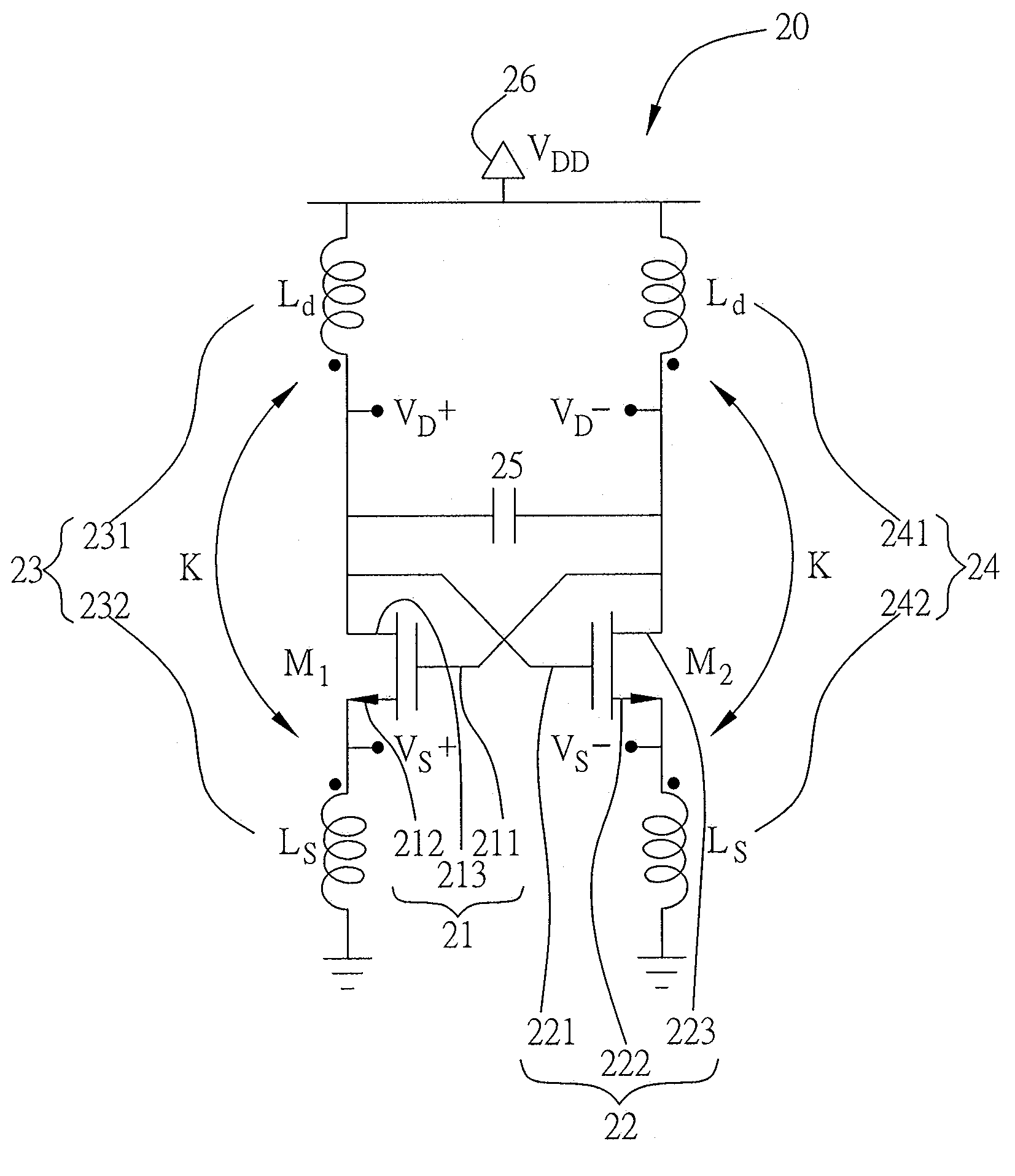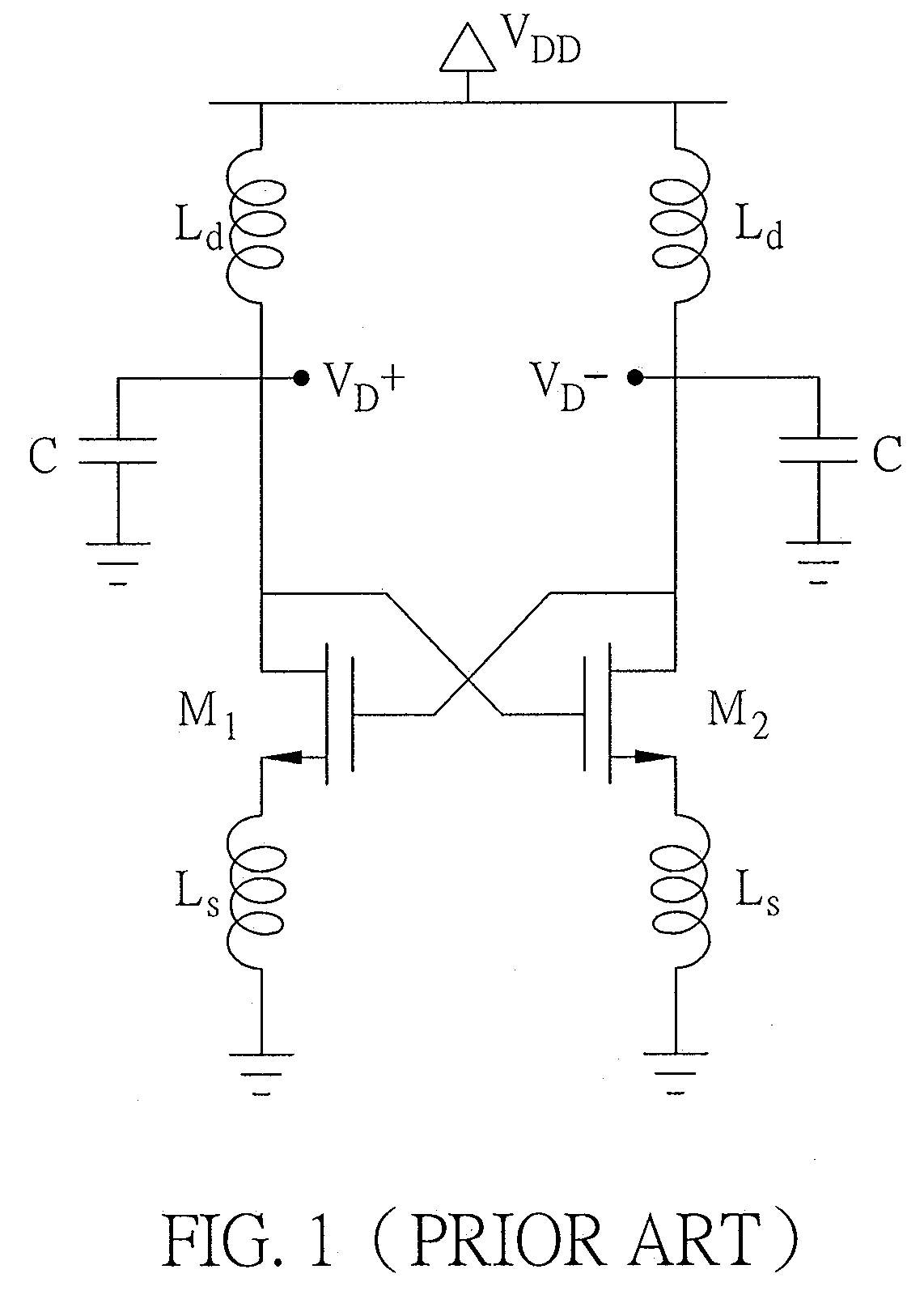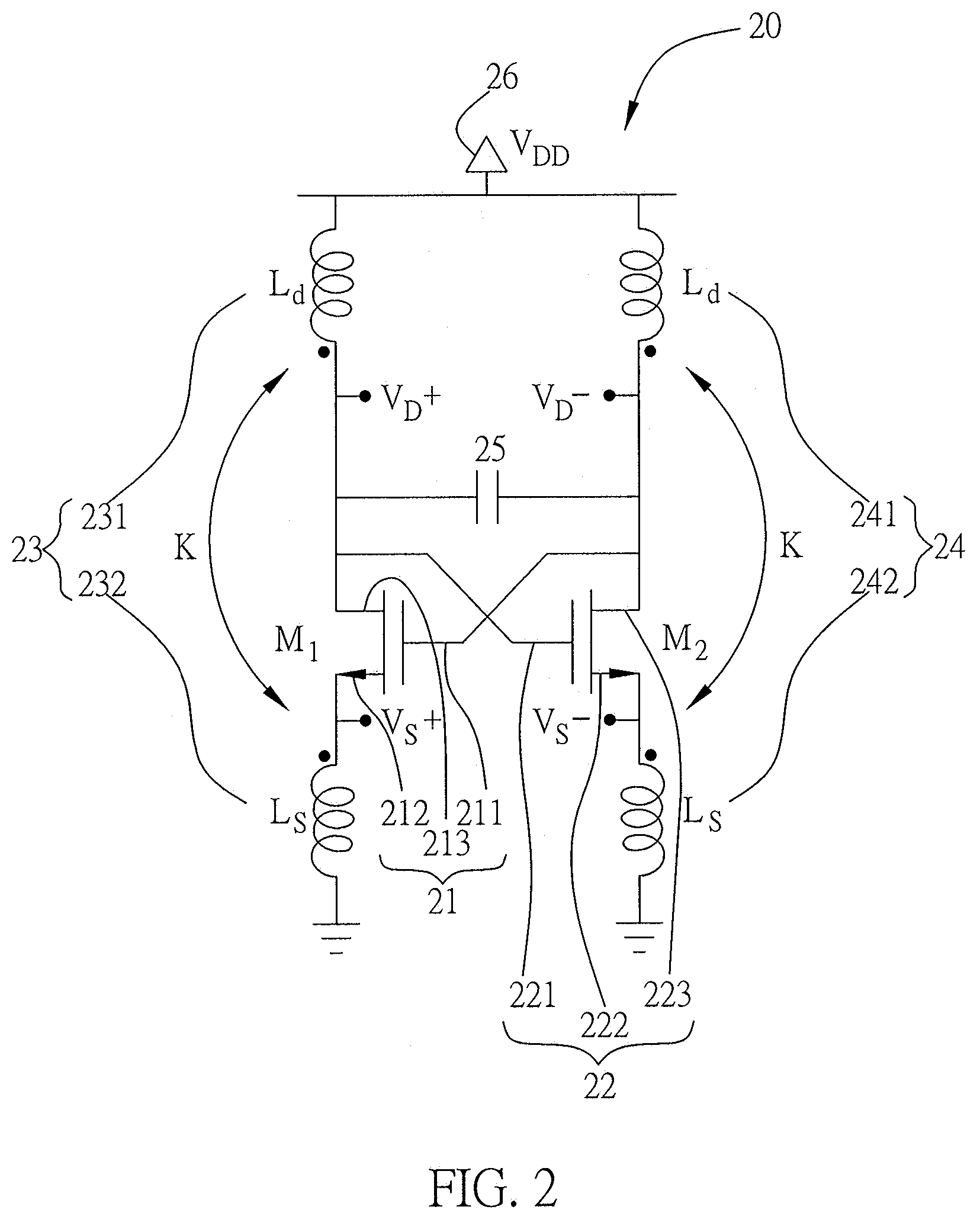Transistor voltage-controlled oscillator
a voltage-controlled oscillator and transistor technology, applied in the direction of oscillator, pulse generator, pulse technique, etc., can solve the problems of low q-factor, power consumption of voltage-controlled oscillating circuit, and large reduction of die size, so as to reduce the parasitic capacitance, reduce power consumption, and increase the q-factor of the inductor
- Summary
- Abstract
- Description
- Claims
- Application Information
AI Technical Summary
Benefits of technology
Problems solved by technology
Method used
Image
Examples
first embodiment
[0024]Referring to FIG. 2, a circuit diagram of a transistor voltage-controlled oscillator in the present invention is illustrated. The oscillator is a cross-coupled LC-tank transistor voltage-controlled oscillating circuit 20 having a first transistor 21 with a first gate terminal 211, a first source terminal 212 and a first drain terminal 213; a second transistor 22 with a second gate terminal 221, a second source terminal 222 and a second drain terminal 223, wherein the first gate terminal 211 is coupled to the second drain terminal 223 and the second gate terminal 221 is coupled to the first drain terminal 213, forming a cross-coupled transistor structure; a first transformer inductor 23, wherein the inductor is a coupling inductor in the cross-coupled LC-tank voltage-controlled oscillating circuit 20, and the first transformer inductor 23 includes a first induction coil 231 and a second induction coil 232, further the first induction coil 231 is connected to the first drain ter...
second embodiment
[0028]Referring to FIG. 4, a circuit diagram of a transistor voltage-controlled oscillator in the second embodiment is illustrated. The difference between the second embodiment and the first embodiment is that an NMOS transistor variable capacitor set 250 replaces the capacitor set 25; the NMOS transistor variable capacitor set 250 includes a third transistor 251 and a fourth transistor 252.
[0029]Also, the third transistor 251 includes a third gate terminal 2511, a third source terminal 2512, a third drain terminal 2513 and a third substrate 2514, and the fourth transistor 252 includes a fourth gate terminal 2521, a fourth source terminal 2522, a fourth drain terminal 2523 and a fourth substrate 2524. The third source terminal 2512 is coupled to the third drain terminal 2513, the fourth source terminal 2522 is coupled to the fourth drain terminal 2523. Furthermore the third substrate 2514 is coupled to the first drain terminal 213, and the fourth substrate 2524 is coupled to the sec...
third embodiment
[0030]Referring to FIG. 5, a circuit diagram of a transistor voltage-controlled oscillator of the present invention in the third embodiment is illustrated. The difference between the third embodiment and the second embodiment is that the transistor voltage-controlled oscillator in the third embodiment includes two extra sets of output buffer amplifiers 281 and 282 which serve the purpose of stabilizing the output signals of the transistor voltage-controlled oscillator and increasing the output signal swing.
PUM
 Login to View More
Login to View More Abstract
Description
Claims
Application Information
 Login to View More
Login to View More - R&D
- Intellectual Property
- Life Sciences
- Materials
- Tech Scout
- Unparalleled Data Quality
- Higher Quality Content
- 60% Fewer Hallucinations
Browse by: Latest US Patents, China's latest patents, Technical Efficacy Thesaurus, Application Domain, Technology Topic, Popular Technical Reports.
© 2025 PatSnap. All rights reserved.Legal|Privacy policy|Modern Slavery Act Transparency Statement|Sitemap|About US| Contact US: help@patsnap.com



